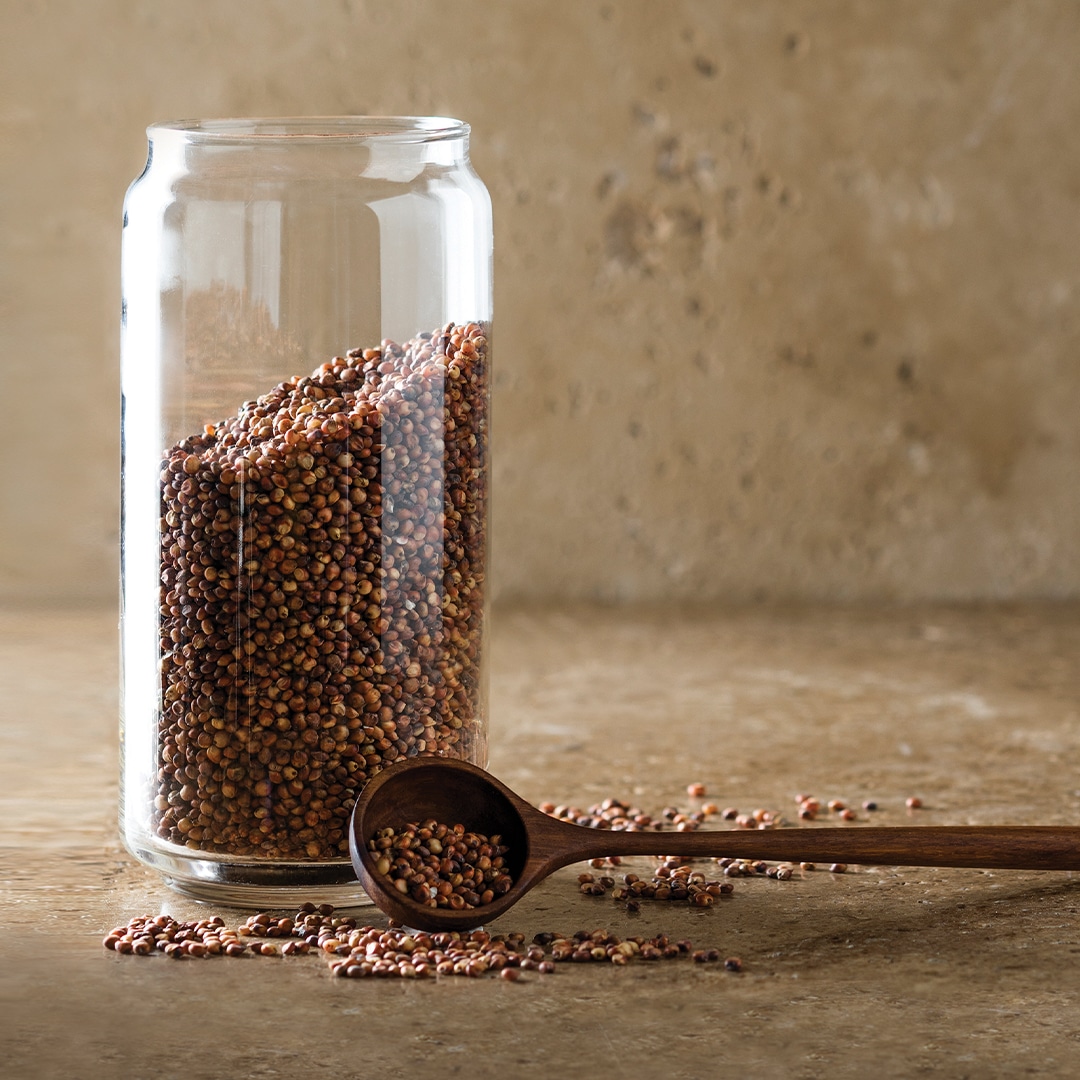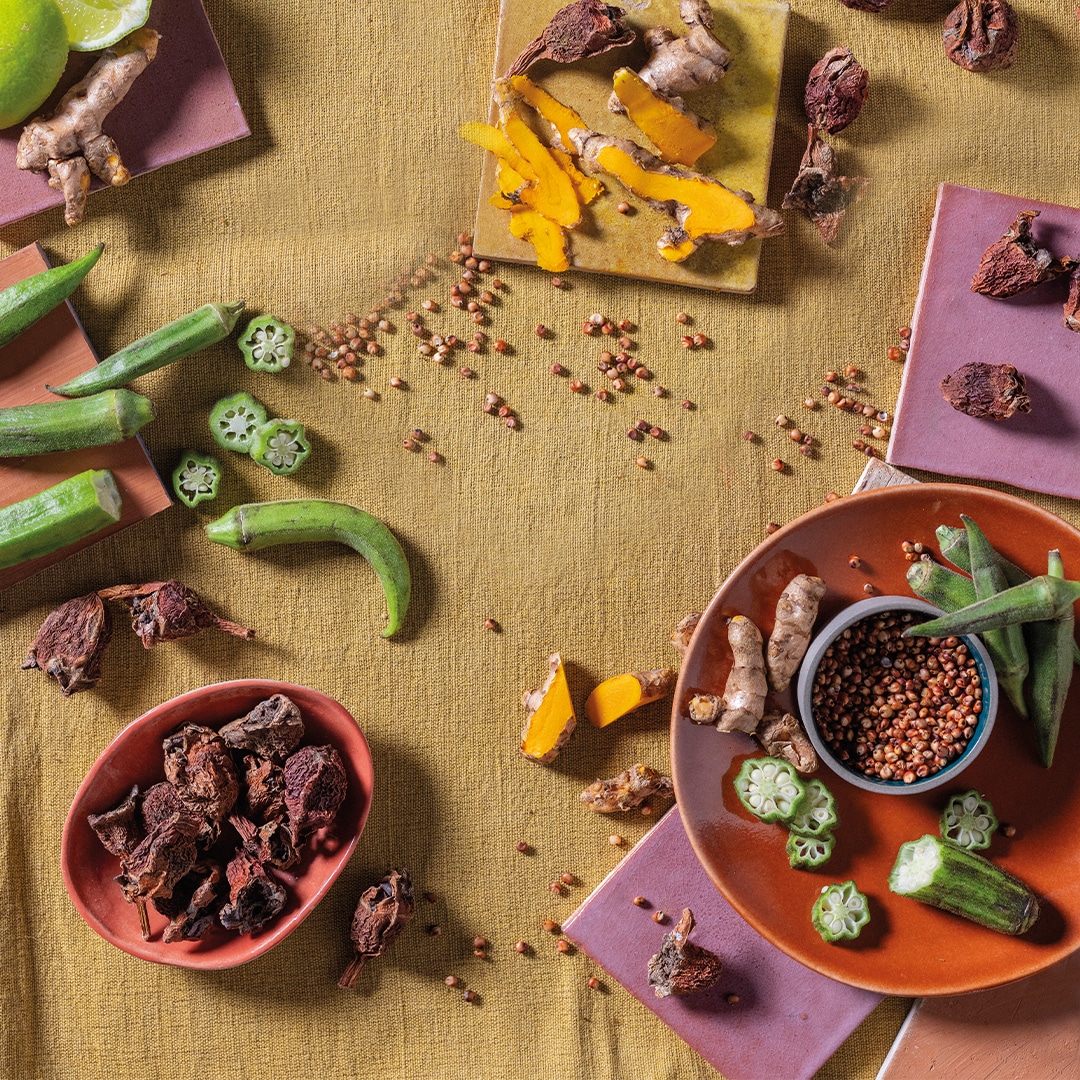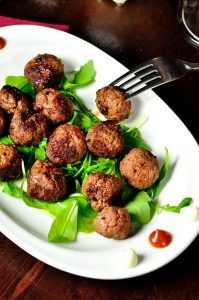This Heritage Month, we embrace the abundance of ingredients, flavours and textures from our continent.
Nature’s pantry
Every culture has ingredients essential to their cooking repertoire. Not only do these ingredients hold immense weight in the authentic flavour that they give to dishes, but in history and heritage as well. Some ingredients are more familiar, while others are endemic to the region. Let’s dive into local African produce to celebrate the diversity of our continent.

Millet
This is a seeded grain that when cooked, looks similar to couscous. Millet is a drought-resistant crop with a low carbon footprint, making it cost-effective to farm due to its reliability in harsh environments.
- Flavour: Mild and wheaty.
- Used for: Porridge, spiced salads, vegetarian patties. • Naturally gluten-free.
Tamarind
A fruit produced in pod-like structures with a hard shell and soft inner pulp. Tamarind paste gives Worcestershire sauce its distinct umami flavour.
- Flavour: Tangy and sweet, often likened to a date.
- Used for: Curries, grilled meats, drinks, jams.
Taro
A root vegetable, also called amadumbe.
- Flavour: Similar to sweet potato, but with added light flavours of nuttiness and vanilla. Grittier than potatoes.
- Used for: Sago pudding, soup and tea. The paste or purée is used as a dessert. • Naturally gluten-free.
Cassava
A root tuber, which falls in the same family as Taro, also called umdumbulu. Cassava needs proper peeling and cooking to remove the exterior toxic skin. It can be dried and turned into a gluten-free flour that is perfect for coeliacs. Cassava flour is used to make the traditional Ghanaian side dish called fufu – a starchy pillowy mash used to scoop up curries and sauces.
- Flavour: Lightly nutty, fibrous and dense.
- Used in: Roasted as a side, chips, dumplings and cakes.
Buchu
The leaves and flowers of this ancient plant are harvested and dried. Buchu has been used medicinally through the centuries to treat chronic pain, ulcers and flu.
- Flavour: Fruity, floral and minty.
- Used for: Herbal flavouring in fish dishes, to infuse oils, butters and stocks, enjoyed as a tea or even in cocktails.
Plantain
A fruit in the banana family, plantains sprout off the stem of a herb rhizome that grows from the ground (as opposed to bananas that grow on trees). Plantains should not be eaten raw and are therefore confused as vegetables.
- Flavour: Starchier and less sweet than bananas.
- Used for: A handy substitute for potatoes that can be deep fried and sugared, baked, used in batters for fritters or slow roasted.
- Naturally gluten-free.
Okra
A green, firm fruit pod filled with white seeds. When sliced into rounds it resembles a floral shape. Often called lady’s fingers, okra is known to become notoriously slimy and tacky when cooked due to a natural thickener found within the cell walls called mucilage. Marinating it in vinegar or cooking it over high heat can reduce this sliminess that causes much conversation between those who love and hate it.
- Flavour: Earthy, fresh and grassy.
- Used: As a thickener in various stews such as gumbo and Creole soup, or sliced and roasted, fried or baked.
Compiled by: Sjaan Van Der Ploeg
Photographs: Zhann Solomons, Fresh Living Magazine




